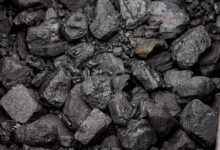The federal government says Russia is ramping up its coal exports to Asia, adding supply to a market that is already seeing weakening demand and adding another headache to Australia’s struggling thermal coal mining industry.
The sector is already facing a whole lot of systemic headwinds, from increasingly ambitious emissions targets among its customers in East Asia, to China’s politically motivated informal ban on Australian coal imports.
While Russia is already a major coal exporter, the Department of Industry, Science Energy and Resources (DISER) warns in a new report the Eurasian resources giant – a notorious climate laggard that, like Australia, won’t let climate concerns stop it from digging up fossil fuels – is stepping up both coal production and export infrastructure.
That means it will be looking to export much more of the fossil fuel to Asia at a time when demand is starting to shrink.
Like Australian coal, Russian thermal coal is comparatively high quality, meaning both will be competing for markets with high regulatory standards, like South Korea.
Last year, Russia exported 151 million tonnes of thermal coal, of which 53 million tonnes went east. DISER predicts that east component will jump to 69 million tonnes by 2024.The majority of Australia’s 200 million tonnes of thermal coal exports in 2020 went to Asian markets.

DISER said Russian coal freight capacity was expected to grow from 125 million tonnes to 200 million tonnes by 2025.
“The new capacity will provide a tailwind for coal exports in the coming years, though if Asian coal demand fails to fully recover, some of this capacity may prove to be surplus to requirements over the longer term,” DISER said in its latest quarterly update on the resources sector.
“Russian coal is mostly of high quality; it has a relatively low sulphur content which makes it highly suitable for South Korea and other nations with strict laws against fine-particle pollution.
“Historically, exports from Russia have been constrained by the inland placement of its coal basins. Improved transportation infrastructure will partly offset this, allowing Russian coal to compete more strongly with high-grade Australian coal in many parts of the Asian region.”
Overall the report paints a fairly gloomy long-term picture for Australia’s thermal coal export industry – although in the short-term coal exports are enjoying a boost thanks to post-lockdown recovery in some economies.
But in China, Japan, South Korea and Taiwan – all big markets for Australia – coal demand does not look like it is going to return to pre-pandemic highs.

The informal ban on exports to China meant in the March quarter, Australia’s coal exports were “effectively nil”, the report said, while Russia’s rose by 23 per cent.
As the chart shows, over the next three years, China’s coal imports will fall, while Japan, South Korea and Taiwan’s will remain largely flat. India’s will rise, but as RenewEconomy reported last week, that is unlikely to remain the case for long.
The International Energy Agency and the Institute of Energy Economics and Financial Analysis predict India’s coal demand will peak in 2025, while UK think tank Ember argues it may already have peaked. Meanwhile, India plans to source a greater proportion of its coal domestically, which means cutting imports in half.
Southeast Asian demand for thermal coal is expected to continue to rise over the next three years.










